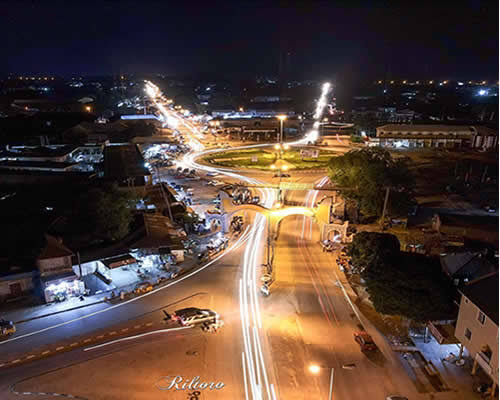By Rauf Oyewole
According to the recent data from the National Bureau of Statistics (NBS) on inflation rates, here is an analysis of the ten most expensive states in Nigeria in October 2024, Nairametrics reports
1. Bauchi
Bauchi maintains the top of the list of the most expensive states to live in Nigeria in October 2024, with an all-item inflation rate of 46.68%, a sharp increase from 44.8% in September, representing a 1.88%-point rise.
Interestingly, food inflation rose from 36.16% in September to 37.49% in October, a relatively modest 1.33 %-point increase.
This indicates that non-food items were the primary drivers of inflation in Bauchi.
The sharp rise in living costs across both food and non-food sectors highlights the economic challenges faced by residents in the state.
2. Kebbi
Kebbi’s all-item inflation rate climbed to 40.03% in October, up from 38.0% in September, reflecting a 2.03%-point increase.
Similarly, the food inflation rate rose from 41.20% in September to 43.34% in October, a 2.14 %-point increase.
These inflationary pressures emphasise the rising cost of living in the state, with food prices contributing heavily to the overall inflation rate.
3. Sokoto
Sokoto recorded an all-item inflation rate of 39.66% in October, up from 38.7% in September, a 0.96%-point increase.
The food inflation rate in Sokoto reached an alarming 52.19% in October, rising from 50.5% in September, a 1.69 %-point increase.
This makes Sokoto’s food inflation the highest among the top 10 states.
The steep cost of food in Sokoto poses significant challenges for residents, particularly for low-income households who spend the majority of their income on food.
4. Jigawa
Jigawa’s all-item inflation rate stood at 38.31% in October, showing a slight decline from 38.4% in September, a 0.09%-point drop.
However, food inflation increased marginally from 43.17% in September to 43.42% in October, a 0.25%-point rise.
While the overall inflation rate remains stable, the high food inflation rate continues to make Jigawa one of the most expensive states to live in, reflecting the persistent cost burden on households.
5. Kano
Kano recorded an all-item inflation rate of 37.61% in October, a significant jump from 34.46% in September, marking a 3.15%-point increase.
Food inflation also surged sharply, rising from 38.26% in September to 42.47% in October, an increase of 4.21%-points.
These sharp increases reflect growing inflationary pressures in Kano, particularly in the food sector, which heavily impacts household budgets.
6. Anambra
In October 2024, Anambra’s all-item inflation rate reached 37.49%, an increase of 1.33%-points from the 36.16% recorded in September.
Food inflation also rose from 39.83% in September to 41.09% in October, a 1.26%-point increase.
The state, known for its vibrant commercial activities, has been facing rising living costs driven primarily by food prices.
7. Gombe
Gombe experienced an all-item inflation rate of 36.88% in October, slightly higher than the 36.4% recorded in September, a modest 0.48%-point increase.
The state’s food inflation rate rose from 44.09% in September to 45.35% in October, an increase of 1.26%-points.
Despite the relatively smaller increase in overall inflation, food inflation remains a significant challenge for residents, with prices for staples and other essentials continuing to rise.
This reflects the broader trend of rising food costs across the country.
8. Abia
In October 2024, Abia recorded an all-item inflation rate of 36.72%, up from 35.0% in September, marking a significant 1.72 %-point increase.
Food inflation in the state also jumped from 40.9% in September to 43.25% in October, an increase of 2.35%points.
These rising rates emphasise the increasing cost of essentials, particularly food items, which form the bulk of household spending in the state.
9. Zamfara
Zamfara’s all-item inflation rate stood at 36.33% in October, an increase of 1.4%-points from the 34.93% recorded in September.
Similarly, the food inflation rate increased from 39.40% in September to 41.66% in October, a 2.26 %-point rise.
The consistent climb in both food and overall inflation highlights the strain on household finances, especially in rural areas where access to affordable goods is already limited.
10. Kaduna
Kaduna recorded an all-item inflation rate of 35.79% in October 2024, an increase from 34.82% in September 2024, reflecting a 0.97%-point rise.
The state’s food inflation rate also rose significantly, from 38.88% in September to 41.14% in October, a 2.26%-point increase.
This demonstrates that the rising cost of food continues to be a primary driver of inflation in the state.
Kaduna’s residents have seen their cost of living steadily rise as food items become more expensive, which impacts household budgets more than other categories of goods.

.jpeg)










0 Comments